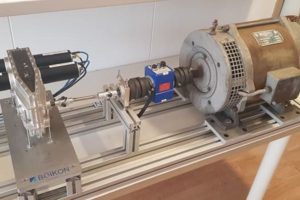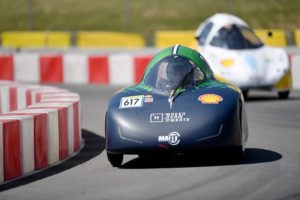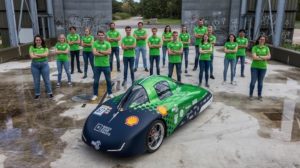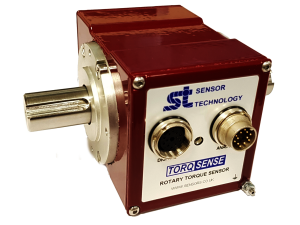 To create the most fuel efficient hydrogen car in the world, Green Team Twente has made a test setup with a torque sensor, to measure the efficiency of the car’s drivetrain.
To create the most fuel efficient hydrogen car in the world, Green Team Twente has made a test setup with a torque sensor, to measure the efficiency of the car’s drivetrain.
Green Team Twente is a student team that focuses on making the most efficient hydrogen car in the world. The multidisciplinary team consists of students from Saxion Hogeschool and the University of Twente. Every year a new team is formed, and a new hydrogen car is developed.
Each new student team builds on the design of the previous year and tries to improve it. At the start of the year, in September 2019, there was an important choice for the mechanical team to make: can we gain more efficiency by further optimising the current drivetrain of the car, or can we gain more efficiency by implementing other techniques?
The drivetrain consists of 4 DC motors that drive a cardan shaft with a certain delay. With this cardan shaft the left rear wheel is driven, which drives the car. The corresponding delay is achieved in a custom-made gearbox.
Choice for rotary torque sensor
Together with our engineers, the students looked at the most suitable torque sensor and opted for a rotating torque sensor from our partner Sensor Technology. “The big advantage of the RWT 410-420 Torque Sensor is that it has a very easy interface, with which we can easily and accurately read the data digitally. This torque sensor was suitable because of the measuring of rotational speed and torque at the same time. We needed this to calculate the accurate efficiency, because a few percent makes a difference in the race. In addition, the cooperation with Althen was very pleasant, there was always someone willing to help us.”
Test set-up with rotating torque sensor

To be able to make a well-considered decision, the efficiency of the current drivetrain was first determined. The students created a test set-up, with an integrated RWT410-420 Rotary Torque Sensor. With this torque sensor, the students tested the angular speed of the PTO shaft and the torque that is generated.
By measuring the input current and voltage of the motor controllers, they can determine the combined mechanical and electrical efficiency of the drivetrain. Varying the load on the motor with an eddy current brake simulates the conditions of a race.
The power supply of the motor controllers and torque sensor can be read with the included LabVIEW software. The input and output power, with the associated efficiency, can be digitally processed and stored with this software. With the test setup, the team measured the efficiency of the drivetrain at as many points as possible. The team then derived the three-dimensional efficiency curve by fitting the measured points. The conditions under which the tests were conducted are based on data from previous car races, such as the Shell Eco Marathon 2019, and the Drivers World Championship 2019.
After experimentally determining the efficiency, the students can compare the ideal theoretical model with the experimental data.
Torque sensor test results

The test showed that the drivetrain performed many times better in theory than in practice. The drivetrain could therefore perform even better. However, the team then runs into mechanical limits of the engine, which cannot be redesigned within the current system.
Based on the test, the team looked for alternatives, and made si
mulations of different alternatives. Ultimately, the choice was made to develop a new hub motor, whereby the optimum efficiency is geared to the desired range.
After the motor has been developed and the motor controller has been tuned to the motor, the efficiency of the hub motor is tested in practice. Then the student team can compare the test results with the old drivetrain to see how much efficiency is improving with the new drivetrain, taking another step in developing the world’s most fuel efficient car.





